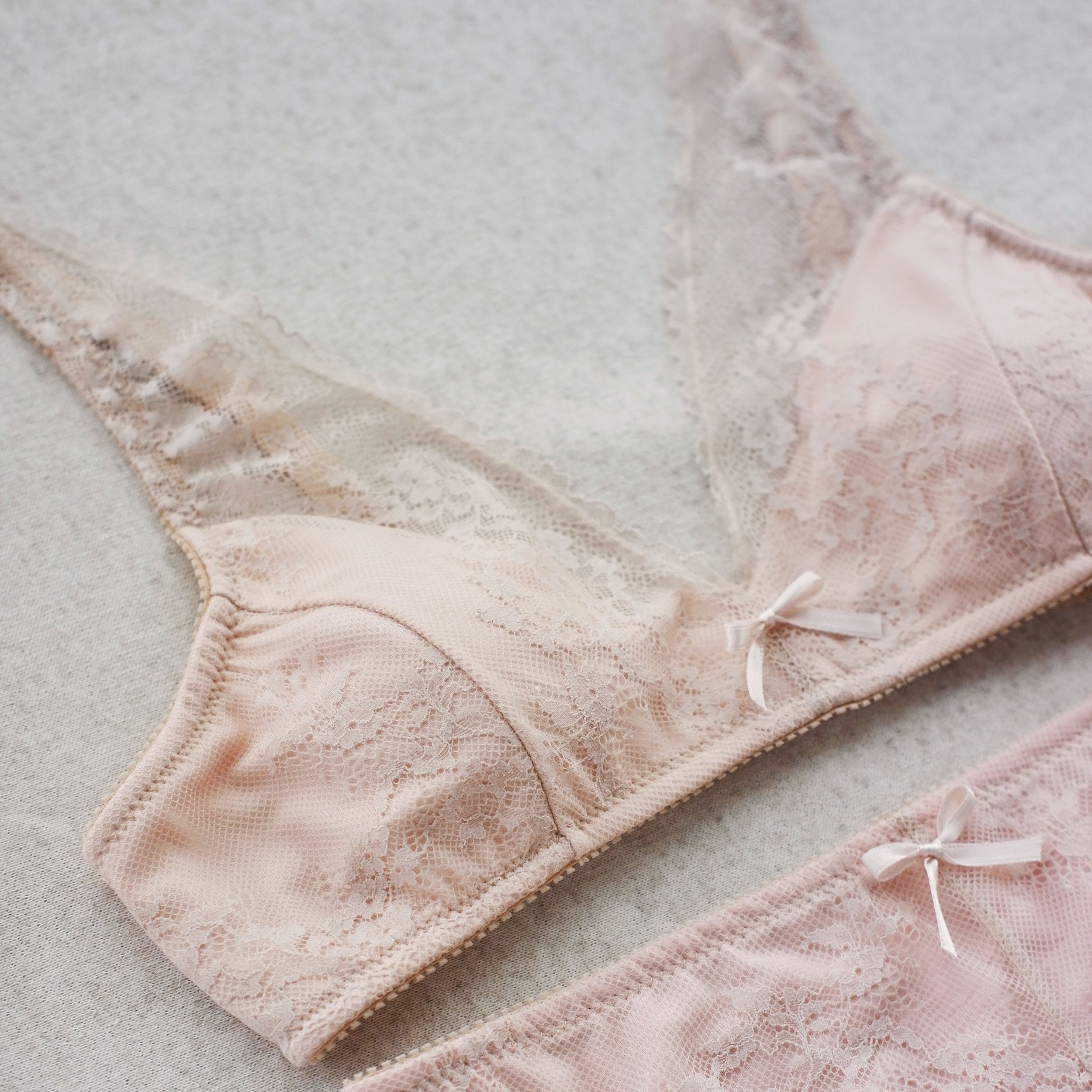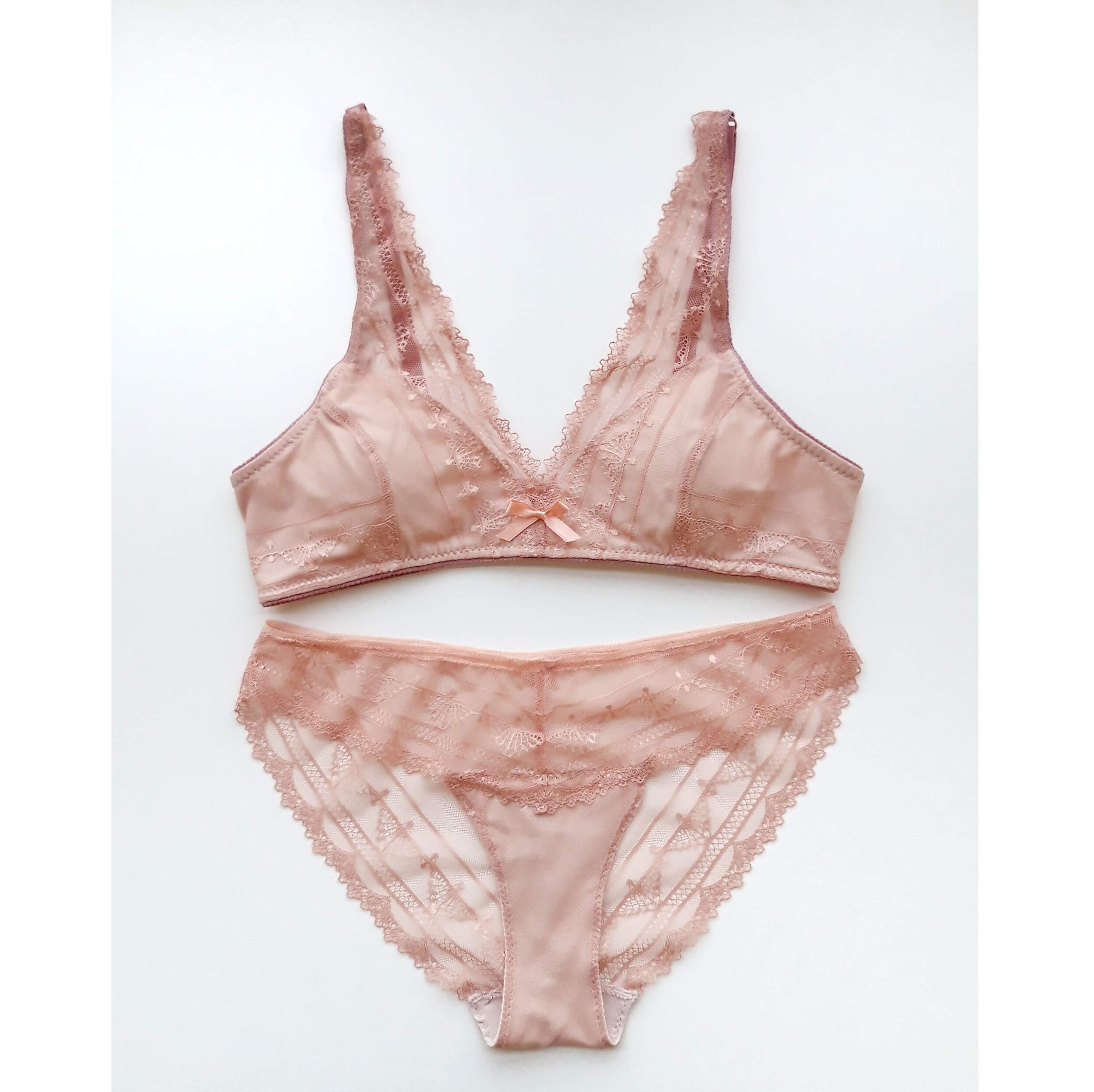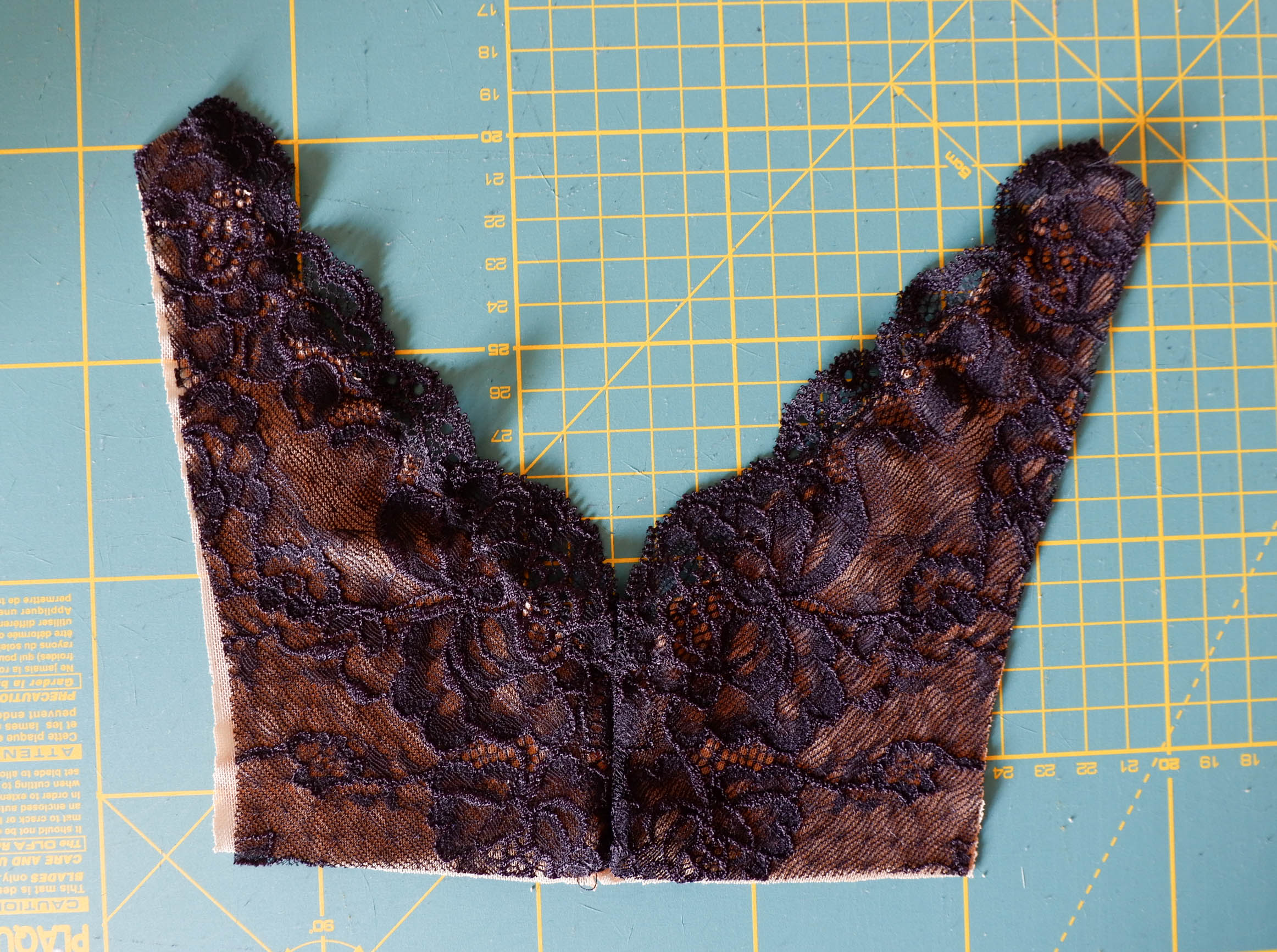Espero que te ha gustado esta modificación del bralette Hanna! Me han ocurrido más posibilidades con esta versión, por ejemplo:
- en vez de dejar una parte de la copa "al aire" podrías poner allí tul y así crear diferentes efectos de transparencia. Se podría hacer si cortas la pieza A entera de tul y luego le pones encima la nueva pieza de encaje, sólo tienes que coser el encaje encima de tul con un zig-zag siguiendo los bordes de la puntilla y poner el bies en el borde
- en vez de poner ese extra tirante de escote para manetner el mismo estilo como el Hanna original, podrías hacer el bralette tal cual usando tirante desde el nuevo punto de sisa que hemos creado. Para eso deberías cortar el tirante aprox 45 cm de largo (en vez de 35 cm como en la versión original) y una vez que tengas cosido el elástico de la sisa simplemente le coses el tirante allí en le revés con el remate
En fin...hay tantas posibilidades como tú puedas imaginar. Ya que estoy con este tutorial os cuento brevemente también cómo hice esta otra modificacion del otro día.
I hope you liked this Hanna bralette hack! I got some more ideas for this version, for example:
- instead of leaving part of the inner cup "open" you could use mesh to create different grades of transparency. You could do it when you cut the entire pattern piece A from mesh and then put the partial lace piece on top of it, you only need to join the lace with mesh by sewing a zig-zag stitching following the scalloped edge of the lace (and sew a FOE on the neckline)
- instead of sewing this extra strap on the neckline to maintain the original style lines of the Hanna bralette, you could also just make a bralette by attaching the strap elastic from the new underarm point we created. In order to do this you need to cut the length of the strap elastic of aprx 45 cm (instead of 35 cm like in the original version) and once you have the underarm elastic sewn you just attach the strap elastic there on the wrong side of the bralette
To finish things off...there are many possibilities as you can come up with. As I am writing this tutorial I'll explain also very shortly what I did to make the other version.





















































































